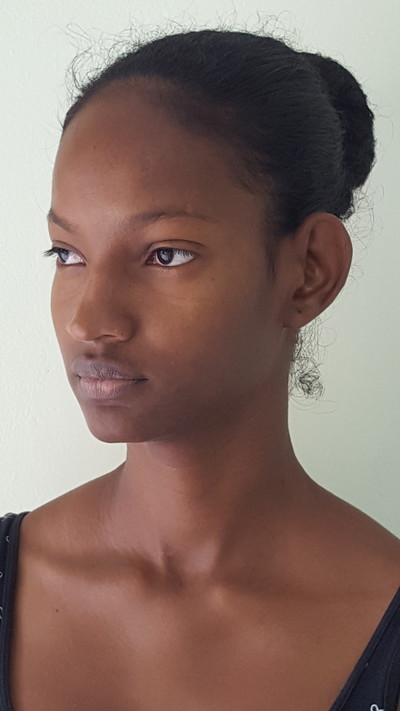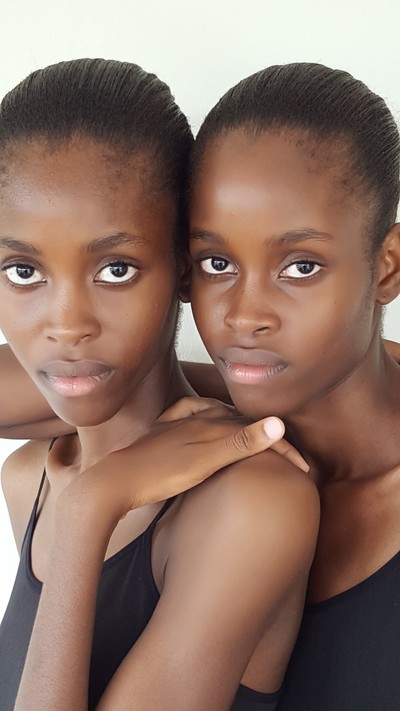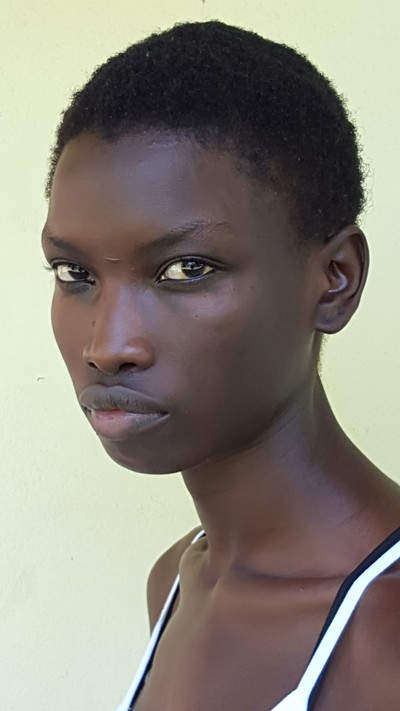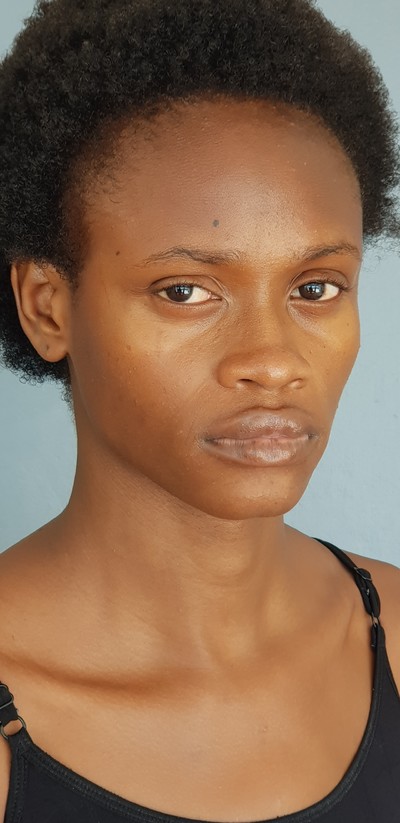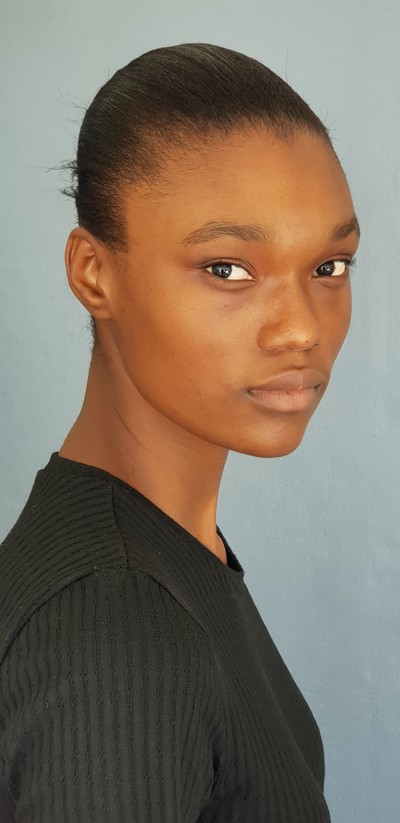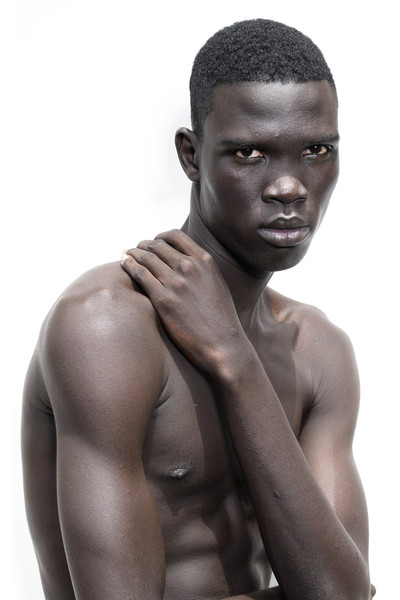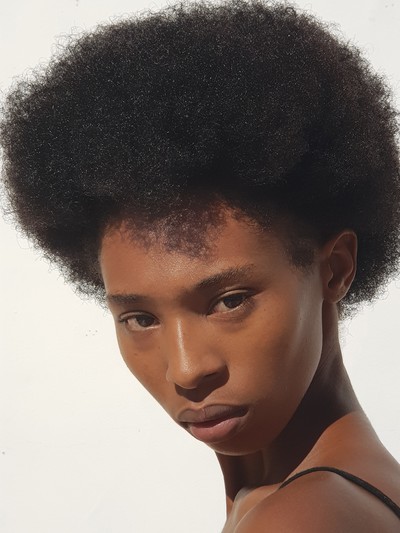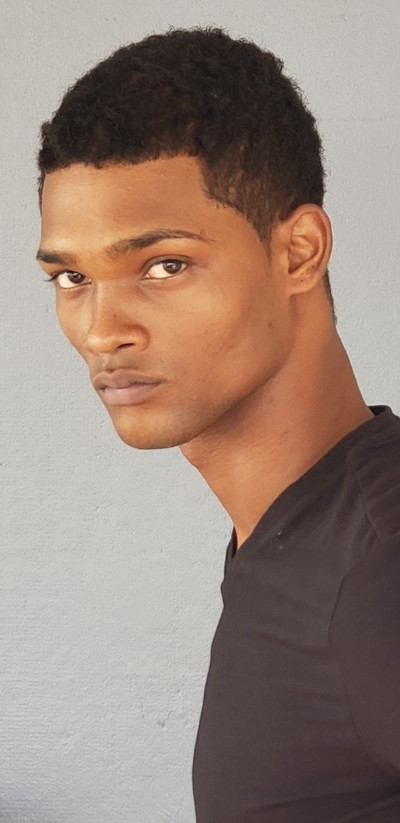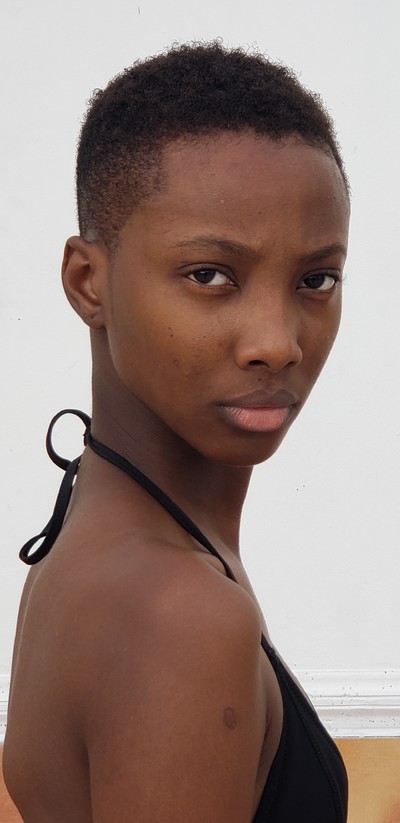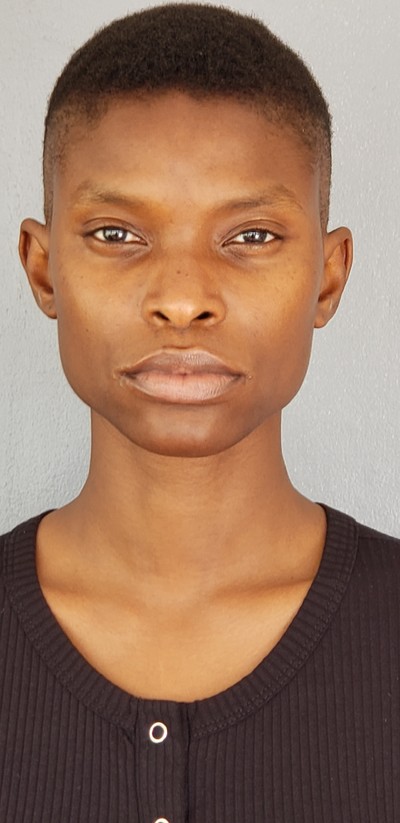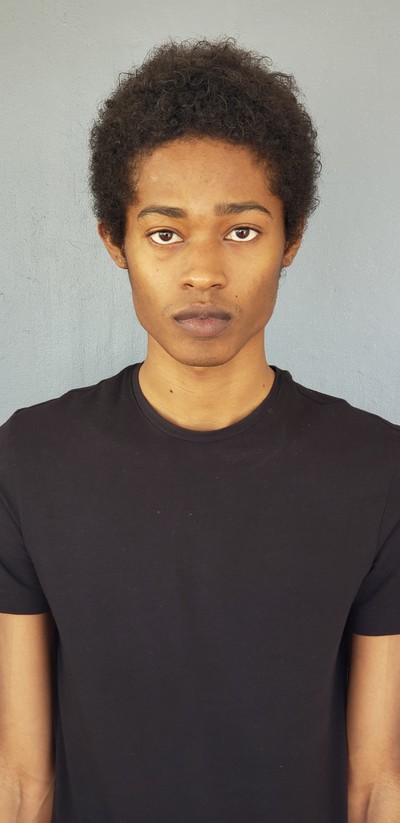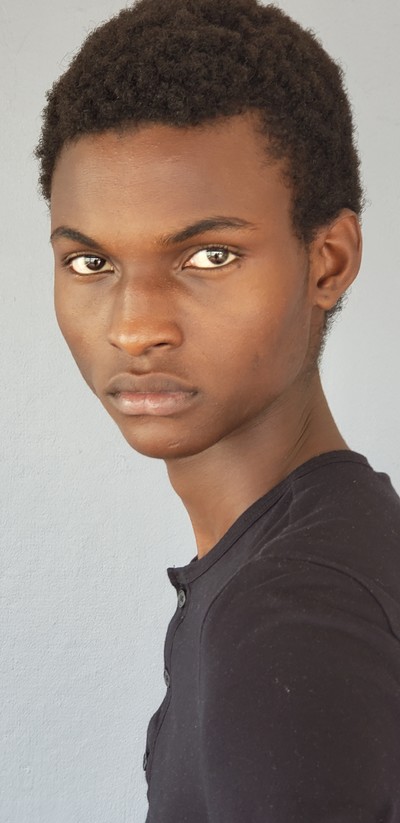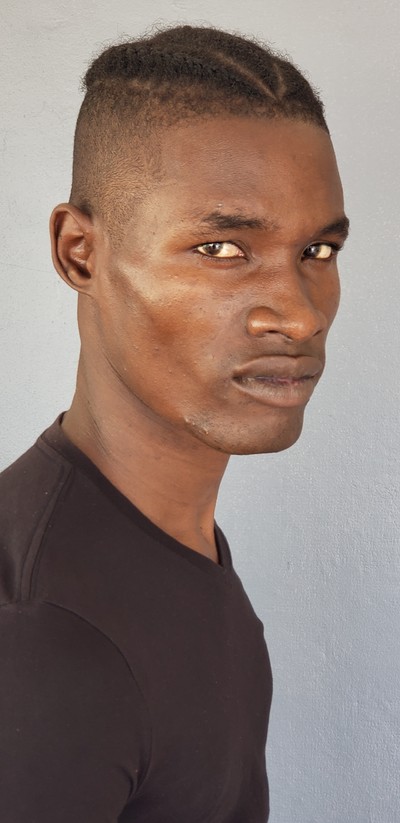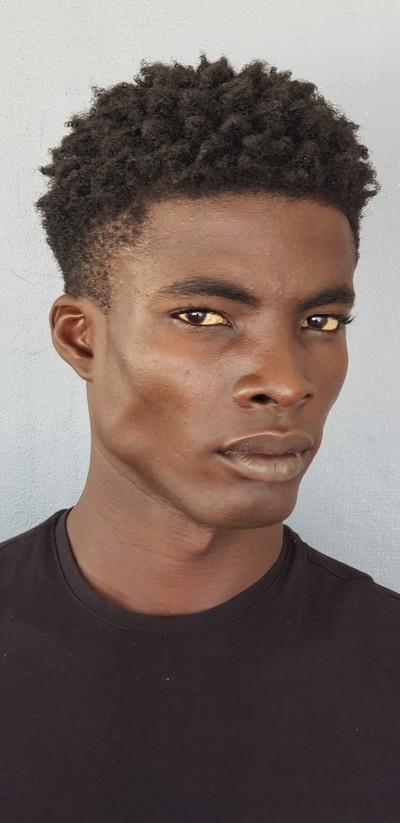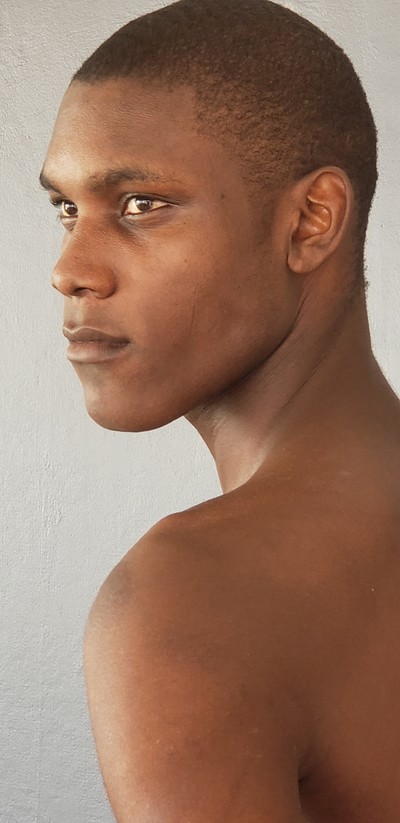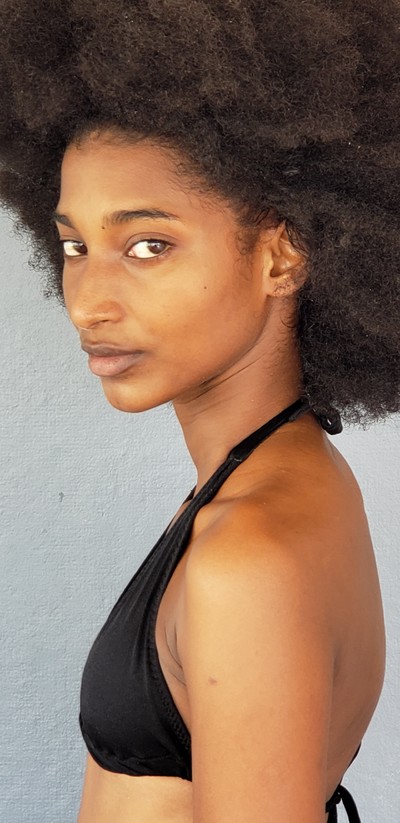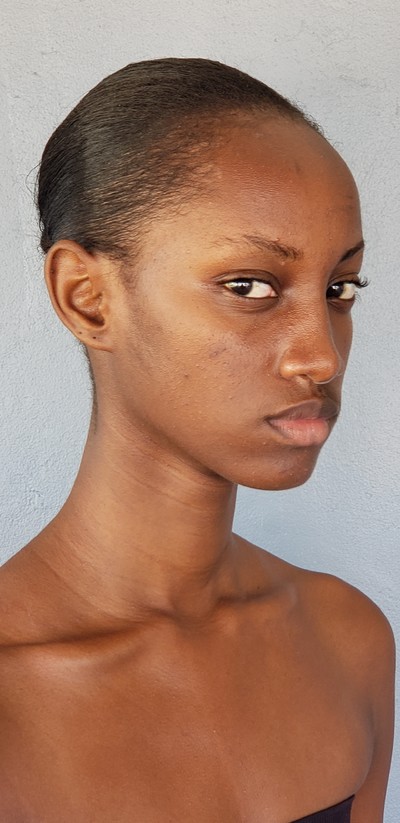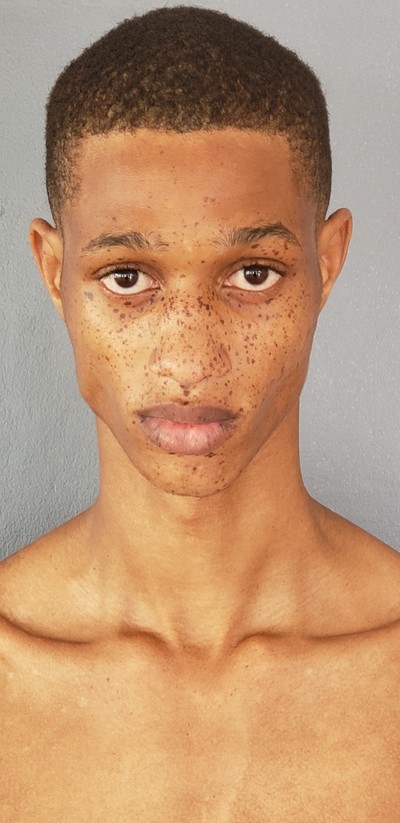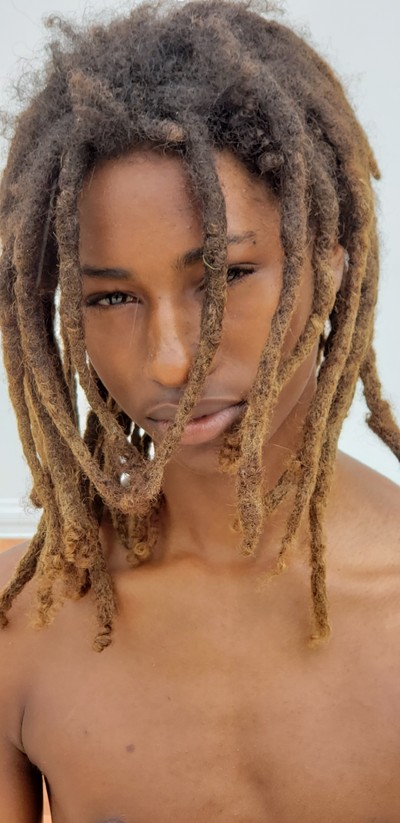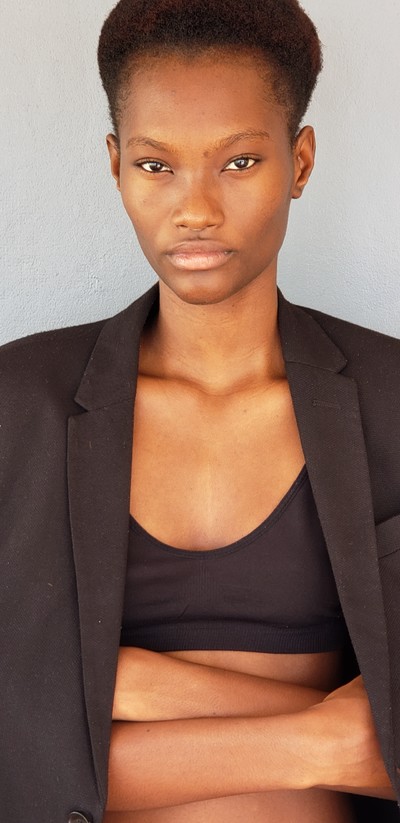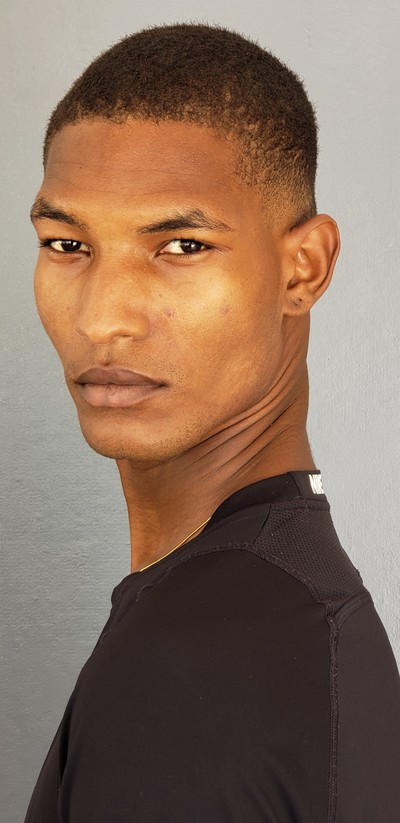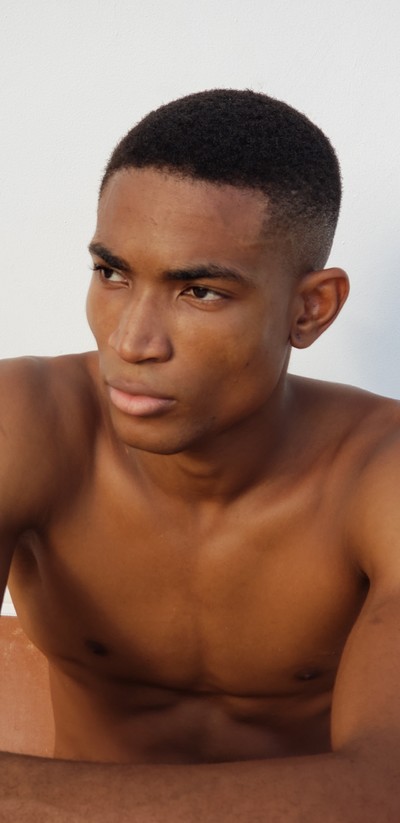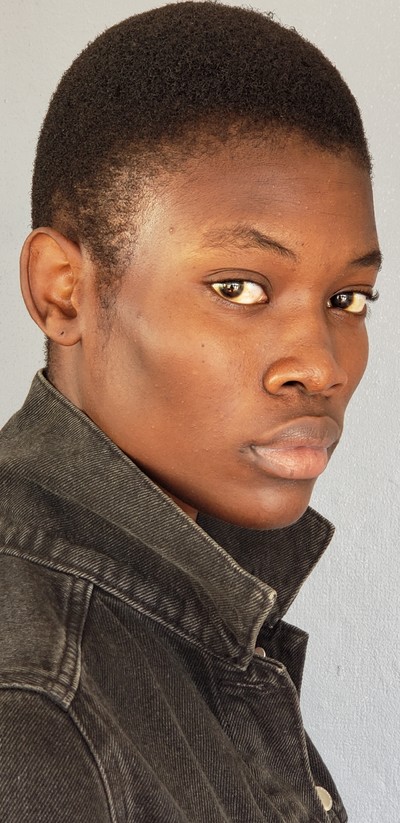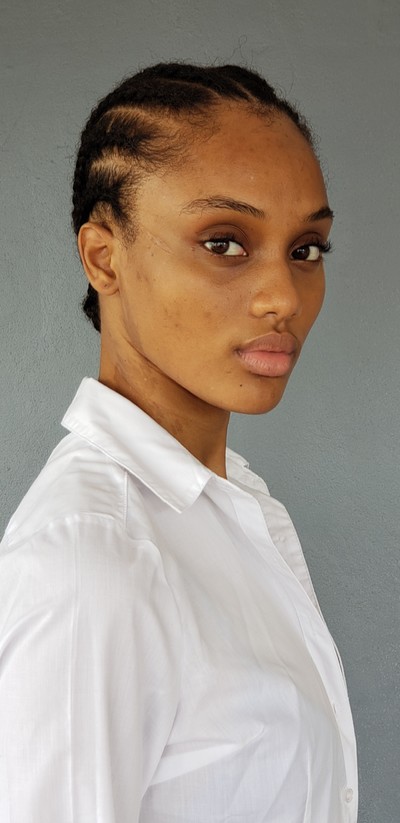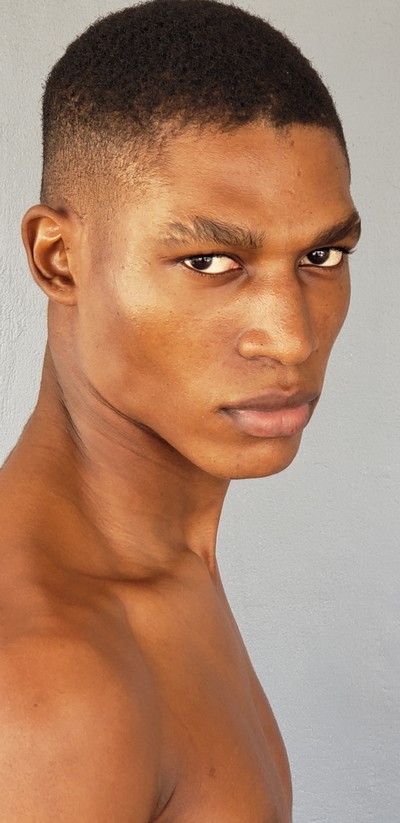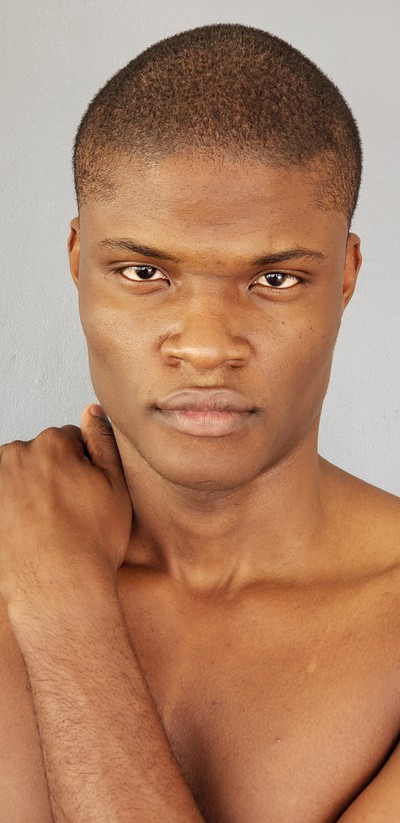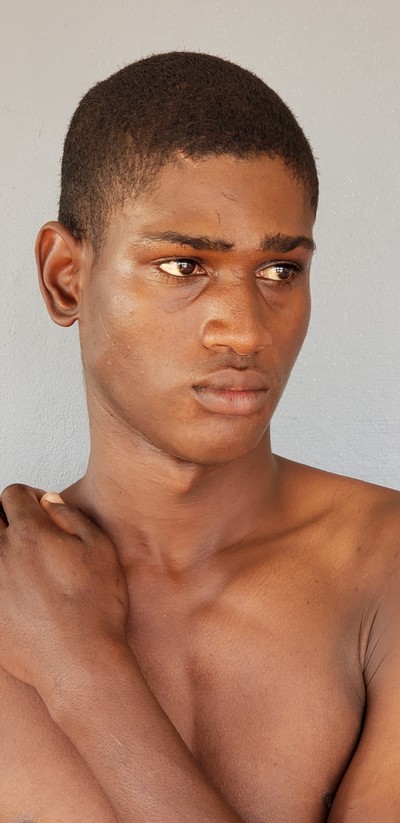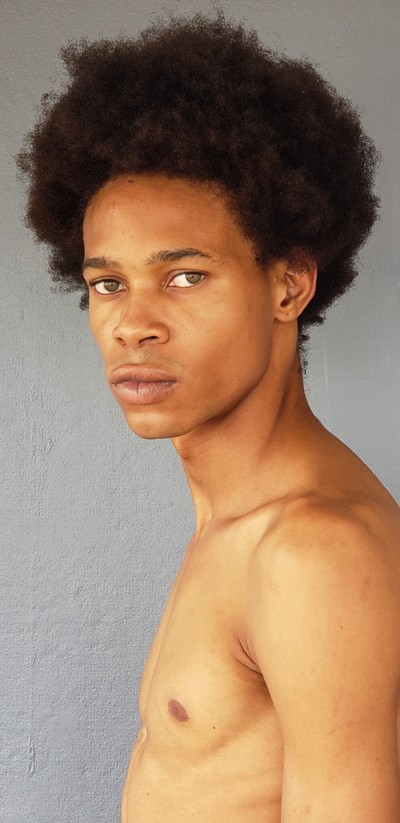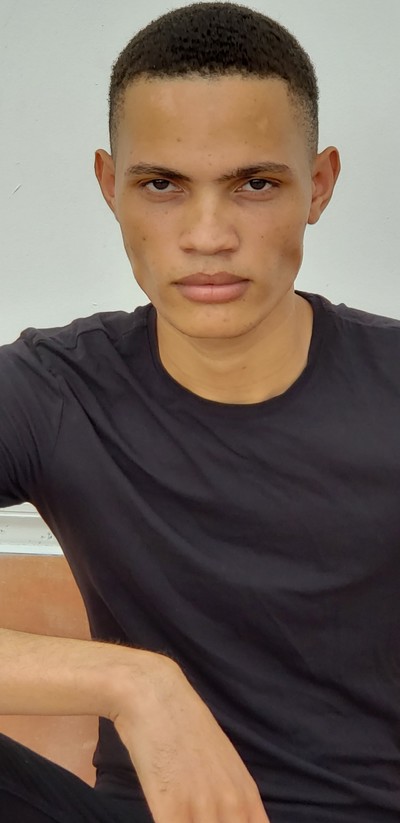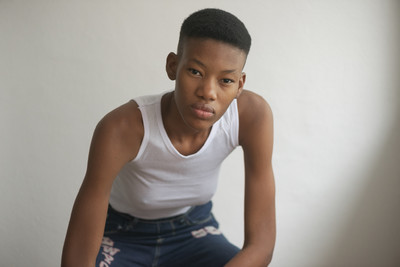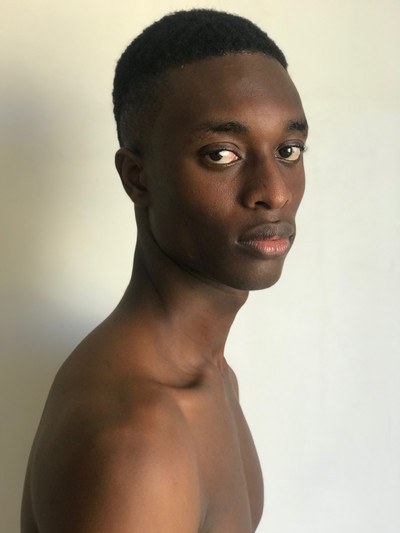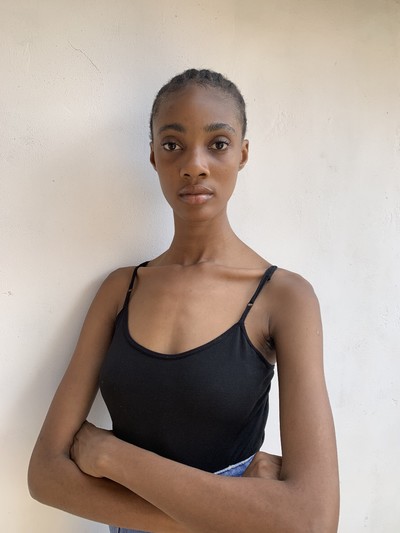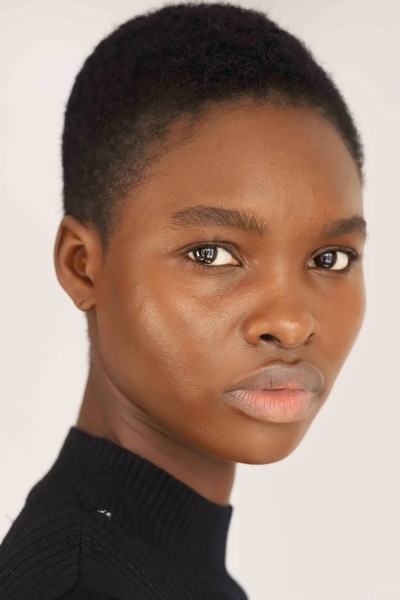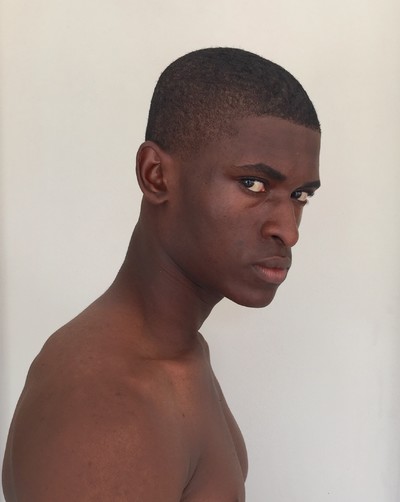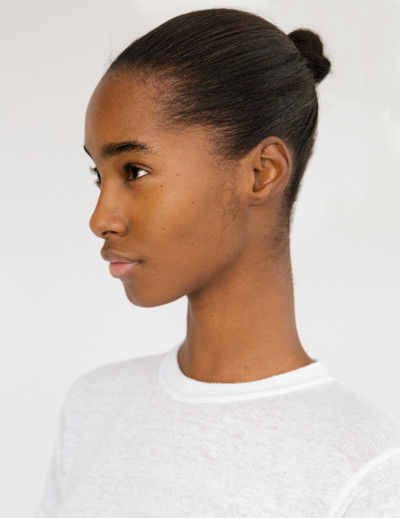Saint International is the model agency changing lives and expanding horizons.
Interview by Rana Toofanian
Portrait by Luca Khouri
Saint International is the model agency changing lives and expanding horizons.
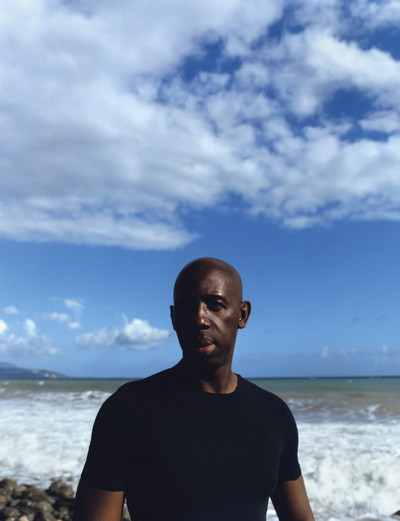
From his base in Kingston, Jamaica, Deiwght Peters has been key to the increased presence of Black models on catwalks, covers and campaigns. His agency Saint International is the biggest name in Afro-Caribbean modelling, with over 60 models under his stewardship, including Romaine Dixon, Kai Newman, and Christine Willis. Peters now works in every major market from Milan to Miami with the most prestigious houses, including Chanel, Prada, Burberry, Gucci and Celine. Eight models from Saint walked for Balenciaga’s Autumn/Winter 2018 runway show alone, and the agency has established a spirited alliance with LVMH Prizewinning designer, Grace Wales Bonner.
Committed to his agency’s motto of ‘changing lives and expanding horizons’, Saint’s discoveries include Tevin Steele, a former coconut vendor from Port Antonio who debuted for Saint Laurent in 2017, and Lawrence, spotted on his way home from school, who in 2019 became the first Black cover star of Vogue Hommes. As the agency extends into new territories – the Ivory Coast, Nigeria, Angola, Cameroon, South Africa, and France – System caught up with its founder to discuss his career, change, diversity, and the barriers Black models continue to face.
Rana Toofanian: Saint has been around for 20 years now. Can you look back and see a turning point for you and the agency? A moment when things really took off?
Deiwght Peters: In terms of big campaigns, it all started around six years ago. We had a model go to New York, and the agent called to send her back, saying, ‘The girl is too raw’ and ‘The client thinks she is too green’. I’ll never forget it. I had read about other girls who had started out the same way; girls who couldn’t speak ‘proper’ English, but still went on to become superstars. Why would it be any different for her, as a Black model? From when I started out, I sensed that agencies might not always support a Black model and agent. I said, ‘Look, every once in a while a model comes along whose beauty transcends everything. This girl is going the be the one this season.’ He responded, ‘Do you really believe that?’ And I said, ‘Yes. So much so that if you send her back to Jamaica, I am just going to put her on another plane back to New York, to another agency.’ Her test shoot came back two days later, and the same agent sent me the pictures. I wrote back, ‘Let me go further: she is going to be a Calvin Klein exclusive this season.’ So they sent her material over to Calvin Klein, and forwarded me the e-mail from the casting director the next day, saying that she was one of the most stunning models they had ever seen, and they wanted the world exclusive.
Who was the model?
Kai Newman. I knew that she was remarkably shy, but I just trusted my gut. That was a turning point for me and my relationships with agents, in that a major brand backed up what I said would happen. In New York, Kai was booked by Calvin Klein, Rodarte, Marc Jacobs, Tommy Hilfiger. From then on, the agents became very supportive. She was so new that the stylists gave her flat shoes for some of the shows, even though most of the girls were in heels. I travelled with Kai in Europe for the entire season, and she would walk in heels to make sure she got it right. We went to see Gucci in Milan – at the time it was rare for a brand-new face to be working the Gucci show – and she was booked in her very first season. By the time we got to Paris there was such an energy behind her. Everyone suddenly knew her; all the photographers, stylists and casting directors were really into her. She became the hottest new face of that season. So I started using that approach for models who came after her, like Tami Williams.
Coming from an underexposed market, did you feel that agencies, brands and casting directors were always receptive? How did you decide which to work with?
You create these relationships based on trust and your respective understanding of the markets. The first agencies I started working with were Premier in London and Why Not in Milan. One of the first agents I worked with was Matteo Puglisi. We met in Milan when he was at Major Models, then he started Future Models, and he is now the global manager for Select. With hindsight, I believe that there were agencies who might not have wanted to sign a model from me because I was Black. Let’s be clear on that. I think there were also quite a few who were intrigued that I was from Jamaica. And others may have realized that I knew quite a bit, because I never walked into an agency unprepared. I understood early on what the industry expected and was amazingly organized for every meeting. That was part of how I think I broke through: agents saw that they didn’t have to style my models from scratch, that they were ready to go. I’d walk in with this massive portfolio full of names, heights, measurements, photographs, and each time they’d see a face, I had a package of Polaroids ready. Many of the agents I met said that in all their years, they’d never seen such an organized presentation. They knew I was serious, and that really worked in my favour. I had also launched a collaboration with one of the top television stations in Jamaica for a summer model search across the island, which documented me finding new faces in the ghettoes, streets and rural areas. This was before America’s Next Top Model. We did the show for about six or seven years and that helped project us into certain markets. British Airways was one of the show’s sponsors, and the prize-winners would often receive a return ticket to London, so agents knew that they didn’t have to invest to fly the models in.
‘I had already started managing a group of talented young male singers named Piano. They were like the Boyz II Men of Jamaica and did remarkably well.’
Let’s go back a bit. Where did you grow up? What did you do before you started Saint?
I’m not from Kingston, originally; I moved here when I attended the University of the West Indies. Before that, I attended high school in my home parish, Clarendon, about a 30-minute drive from Kingston on the south coast. I did a bachelor’s in management, specializing in international marketing and business. Right out of university I started working for a dynamic young bank in Jamaica, where I stayed for five years as a management associate. I actually received three job offers after my graduation, but my parents insisted I go into banking. To be honest, it worked out well: my experience with finance has served me well in terms of how I make decisions and approach operations. You understand what works and what doesn’t, and how to be pragmatic in your decisions.
How did you transition from management associate to starting a modelling agency?
At the time of the financial meltdown in the Jamaican economy, I had already started managing a group of talented young male singers named Piano. They were like the Boyz II Men of Jamaica and did remarkably well. I took them from scratch and developed them into a marketable commodity: a highly stylized, well-choreographed package. I called my talent company Saint. I was going through names, and I was in the bathroom and said to myself, ‘Perhaps I should just use part of my own name? You are named after Saint Peter. Why not just Saint?’ Saint International. At that time, a few people in the modelling industry in Jamaica approached me about getting into the business, but I wasn’t interested. Then, at a talent convention in Florida for singers and models, I met Rodney Harris and his wife, who run an agency in Atlanta called Slamm Management. I had gone out to Florida for Piano, but I mentioned to Rodney that young women had approached me to manage them as models. He said, you seem to have a good eye and a passion and energy for what you do, so go for it! Rodney was instrumental in me pursuing model management. After that trip, I continued to work with the group, but also took on a few girls to see if it was something I could do. I had to learn that, for models, images are everything! I had to orchestrate photo shoots and really understand styling, make-up and grooming. A year or so on, the young female faces I was representing had become more serious than my music act. I started getting models signed all across the world. I was one of the first agents to send models from Jamaica to South Africa. Years later, I had agencies in New York asking me how to break into the South African market, because they knew I had been sending a lot of my models there for development. I invested in visiting all the markets: London, New York, Paris, Miami, Milan, Chicago. I went everywhere! As I was managing young people, it was important for me to know who the people behind these agencies were. That was a major part of our success. At the end of the day, you have to report back to the parents; they want to know that this is going to be a safe environment for their son or daughter. That sense of trust is very, very important. We recently signed Selah McHail, this young dreadlocked boy who I cast for a Wales Bonner project. When I spoke to his parents initially, I said, ‘I think he is going to be a major star.’ His mother said one thing: ‘Deiwght, just allow him to complete school this year.’ I said, ‘Let’s get him started once he finishes school.’ The role you play as an agent is determined by how people view you as a person, and I’m perceived as a paternal figure.
‘Around six years ago, we had a model go to New York, and the agent called to send her back, saying, ‘The girl is too raw.’ I’ll never forget it.’
I hear they call you ‘Pops’.
Yes! I started working with these kids from Nigeria, and even they started saying it. The name just comes up! Look – I’ve had a fantastic life. I wasn’t a struggling boy from the countryside; my father was a businessman. I had a privileged life in Jamaica. I went to university. I had my own room. I never had to work until I left university. So I believe it is my responsibility to help kids who may not have had that background to get ahead in life. Many of them see this as a way out, as the ultimate opportunity. When I discovered Tevin Steele, he was a coconut vendor. I said, ‘I think I can make you a star’, took his digitals and posted them online. The very next day, we heard from Saint Laurent. Within two months, we were being flown to Paris, where he made his debut. It was the biggest news in Jamaica, and a hugely inspirational moment. After that, old men would come up to me and tell me the story had them in tears. Those kinds of stories help define who we are as an agency, and my motivation as an agent. I live for that kind of story.
Your company motto is ‘changing lives and expanding horizons’. I’ve always thought it amazing that you travel with your models. I’ve heard you give great pep talks!
I travel with them because I am aware that cultural differences can impact a model’s ultimate success, and I want to be the point of translation, if you will. The reality is that many people would never have looked at some of these young boys and girls as models. Here in Jamaica, some of them would even be described as ‘ugly’. When they start modelling, I have to do a lot of work to bring up their confidence: ‘You are beautiful. You are great. You will do so well. Don’t worry about what anyone else thinks. It doesn’t matter where you are from, it’s about where you are going.’ That’s the amazing thing about ‘changing lives, expanding horizons’. Once they start travelling, once they start believing in themselves, that’s what happens. Being able to witness that transformation is amazing. A lot of my models are not just changing their own lives, but the lives of their families, too. Christine Willis’s mum passed shortly after she had debuted on a Balenciaga world exclusive, so before she started at university, she used her earnings to give her mum a wonderful send-off. These young people were once made to think they were ‘lesser than’; through the experience of travelling and self-actualization, they now feel very confident.
How would you define a Saint model?
A Saint model is one who defines the times we’re in. They are very prepared, very sophisticated in terms of their aesthetic, but more than that, they are aware of their roles and responsibilities. For the most part, they are Black models, so they understand that they have got to get into the game in a serious way. They have to deliver consistently at a high level, and must always maintain their integrity.
You mentioned you’re working with models in Nigeria now, too.
I thought it was important to create a wider platform for Black models across the world. And what better place than Africa? We work with models of many colours, though. There are so many people across the world who have dreams and aspirations, but are told it is not possible or it is too difficult. Part of my thing is to change that idea: to let them know that it is real and doable. Until I proposed one girl to Balenciaga, I hadn’t realized it was such a problem for Nigerian models to get passports and visas. They loved her, but she didn’t get the visa. I reached out to a couple of contacts I had in the diplomatic corps and she came across, but we realized that this is really a common challenge. Since then, we’ve brought a model from Angola to Paris to meet a client. Models from Nigeria went to do Celine world exclusives and walk for Hermès. When a model from Cameroon walked for Balenciaga, it was almost like a national event. He told me, ‘Pops, you won’t believe it – I’m like a celebrity now!’
How did you find him?
I often check out the people who like particular posts of our models on Instagram. That’s where he came from. That’s also how I found Aworo Mayowa. She liked a picture of mine, I clicked on her profile and started speaking to her. In no time, we did the Balenciaga world exclusive. There’s a democratization of the fashion industry through social media. Although you must remember that it helps casting directors, too, as they are not beholden to model agencies. I recall getting a DM from the stylist Lotta Volkova, like: ‘I have been hearing about you and I am working on this project for Balenciaga in Paris.’ I had always wanted to work with Balenciaga; I loved the aesthetic.
‘When I discovered Tevin Steele, he was a coconut vendor. I said, ‘I think I can make you a star’. The very next day, we heard from Saint Laurent.’
And now they need you, too.
I am never going to pretend to have the perfect eye, but I’ve tried my best over the years to understand the aesthetics of brands. As a model agent based outside of the major markets, it was always very important to me to take an intellectual approach and understand each designer and house’s aesthetics and inspirations. I do extensive research. I go through 10 to 20 years of archives of shows and campaigns to see who they have used for models over the decades. So, when a talent such as Demna [Gvasalia] at Balenciaga started using my models, I was amazed, but also pleasantly surprised that he could see how their aesthetic fitted what he was trying to define at Balenciaga. Consistently every season, multiple Saint models walk for that house, or do their lookbooks or campaigns. We were doing quite a bit for Gucci as well. It’s not just about being a talented scout. The visage of your models will become part of the story of an international brand, part of defining the image of that brand around the world. So you have to applaud the casting directors – Piergiorgio [Del Moro], Ashley Brokaw, and many of the other top casting directors who work closely with us – for looking outside to find models.
We were introduced in 2019 when we cast two of your models based in Jamaica – Romaine Dixon and Christine Willis – for a System editorial in Guadeloupe with Wales Bonner and the Durimel brothers. A lot has happened since then, including your continuing collaboration with Grace Wales Bonner. She’s introduced many of the new Saint faces in her shows and campaigns. How did you first meet?
When I first heard about Grace, I was like, ‘Wow, this girl is a very special talent’ – and even more ‘wow’ that she is Jamaican. Around the same time, she heard of me and reached out. We met up in London and I knew immediately that I wanted to work closely with her. I helped cast her Autumn/Winter 2019 show and got the Jamaican Tourist Board to sponsor some of the models from Saint to go to London to support her. That was a big deal for her as a young designer. She was in Jamaica last year and the year before that. I organized the whole trip and made sure that she got in touch with the right people.
Grace seems to have a proclivity for nurturing the models she works with by introducing new faces, then using them across multiple seasons. As a British-Jamaican designer, she’s also very much inspired by, and has a deep affinity with Jamaican culture.
The models grow with her, and she grows with them. She’s unapologetic about her inspiration; her culture is her base. What appeals to me most about her work is its unpretentious, intellectual approach; it’s authentic. When I saw Grace being inspired by the music and aesthetic look of 1960s and 1970s musicians and even old Jamaican actors, I thought that was so creative. It works so well for her narrative, so I think we have something going on here.
The industry has obviously advanced in the last two decades – there’s a broader definition of beauty.
Which is due in part to the proliferation of social media, and in part to movements such as Black Lives Matter, which have helped open up these issues to a scale where you just cannot ignore them any more. When you speak about the democratization of fashion, you cannot underestimate how much, once upon a time, certain powers were held by certain groups. Today, one person can be so influential because they have a million followers, and those followers are invested in the narrative of their posts. Social media has a big part to play in the advancement of fashion.
Consumers around the world seem to want an increase in diversity and inclusion in fashion and luxury. Have you seen that shift really being reflected beyond the digital space, from the top?
Lots of changes have been made at the top. I no longer get e-mails saying, ‘I’m looking for a Black model.’ Now it’s more generic: ‘We are looking for models. Can you send over your package?’ Even in terms of tone, it has changed for the better. Certain websites are now policing the industry; we have seen casting directors lose their jobs over the mistreatment of models. We have the power now, so get your act together. There is a broader playing field, with influential players no longer just serving to support a toxic system. I do believe that we are headed in the right direction. At certain fashion houses, the designers themselves are becoming more aware of their responsibilities. They are more culturally aware, because they were the ones blamed for the lack of diversity before. The conglomerates that own the houses also want to be perceived in a certain light. So there’s a lot of moving parts within the system that will ensure that diversity and inclusion is not just a fad, but a part of our reality.
‘Lots of changes have been made at the top. I no longer get e-mails saying, ‘I’m looking for Black models.’ Now it’s, ‘We are looking for great models.’
I wanted to ask you about your involvement with StyleWeek Jamaica and Arise Fashion Week in Nigeria. Nurturing designers from emerging and underexposed markets, such as the Caribbean and Africa, and putting them on the world stage, is a way of accelerating engagement.
When you understand the system, you are also better at uncovering the practical approaches you need to take in order to change it. There are talented designers all around the world, including Jamaica, so we created a platform for them through StyleWeek Jamaica. We brought in writers, editors and stylists – the whole works – to witness their creativity. I brought Parsons School of Design to Jamaica, and other fashion schools, including the London College of Fashion. Many of these designers may not be in a formally structured fashion system, and therein lies the challenge. Retail is a part of the end goal of the creative work, but if there is no manufacturing system in place, if the ecosystem is not there for them, then it will be challenging. We have to be realistic about our ambitions and understand what generic systems need to be formed locally, and how we can plug into the international system to make consistent progress.
What is the future for Saint?
I’d like to see Saint playing an even bigger role in getting more minority models onto the most exclusive, luxurious and prestigious platforms in the world. I want to play a significant role in giving models from markets such as Africa access to opportunities abroad. I want to continue to develop and redefine Jamaica’s position in the global fashion production scene and for it to become a destination for commercials, campaigns and lookbooks.
It seems as if Jamaica has become a key destination for many major fashion campaigns and editorials during the pandemic.
We’ve been very fortunate. We’ve done a lot of work out here this year with brands like Wales Bonner, Zara, Jonathan Simkhai. We have Jamaican photographers and creatives who are doing really well overseas and want to come home for a season and work from here. A lot of clients want to shoot here, but are sometimes concerned about the logistics, so one of our ambitions is to become a fully fledged production company to provide those services as well. We are also looking into other physical locations for Saint. We want to position ourselves in markets where we believe the talent is, so that we can be closer to them, nurture them and try to change the culture in those markets, so that they can support the local models. We’re building our media capacities, too, so we can play an even more influential role developing products and properties for various different channels and platforms. I’m currentlydigitizing my archives from the last 20years. I want to be a real digital company, with everything on the cloud by the spring. Just taking it to the next level.
Do you ever relax? You must have to be on your phone and e-mail a lot!
Yeah, I do! I also have a TV show Rolling with Deiwght Peters, which is a big deal in Jamaica, but the people we interact with on the show are not in fashion. On the show, I speak to people to get insights into their lives.
Do you still see people in the street and scout them the old-school way?
We still do a lot of that. Something that really struck me even in my early days was that the schools in Jamaica would allow Saint to do model searches; even schools that had previously banned any sort of talent search. It was always amazing to go in, see a girl walking across the school playing field, and next thing you know, she’s a model walking in New York Fashion Week. You have to have that credibility. You have to show people what you can do for them to believe in you.
